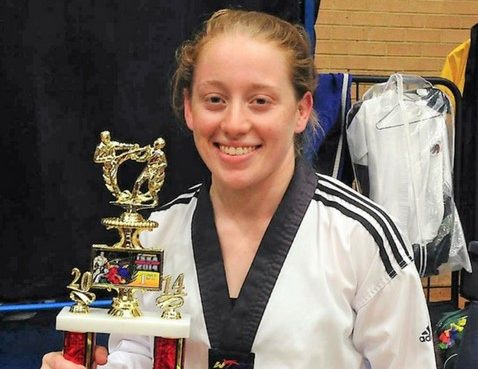
Renee Coleman, Physiotherapist at Jordan Springs is quite busy in her spare time. Everyone has a story and Renee certainly does! When Renee isn’t at work at The Healthy Body Company, she does Taekwondo, Brazilian Jiujitsu and Muay Thai. I was intrigued and wanted to know more so a Q&A session started!
Taekwondo is Korean, and is a martial art based on the use of kicking.
Brazilian Jiujitsu is a Brazilian martial arts, based on submission wrestling.
Muay Thai is Thai kick boxing incorporating the use of eight attack options, kicking, knees, elbows and punching.
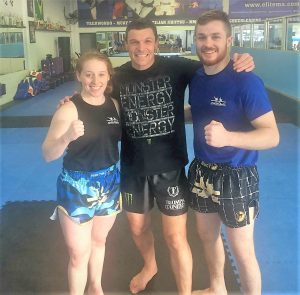
I first started Taekwondo at around 6 years of age to increase my confidence as a child, as I was quite shy and didn’t really want to leave my parents’ side. I wasn’t confident at all.
Over ten years ago I started Muay Thai and two years later I started Brazilian Jiujitsu, with my brother. I was wanting to delve into other forms of martial arts to be able to expand my overall knowledge.
Since starting martial arts my confidence and discipline have improved so much. Martials arts has become a way of life and has made me the person I am today.
Currently I am a third Dan black belt in Taekwondo. I received my first Dan black belt when I was 12yrs, second Dan when I was 15yrs and the third Dan when I was 19yrs old. To move up levels there is a grading process. Grading required for the black belt is rigorous and requires many years of training and dedication. For each Dan the grading becomes more difficult and longer. For the first Dan black belt the grading duration is around 3hrs.
I have competed at state and national level for both Jiujitsu and Taekwondo from the age of 8. My aim this year is to keep competing!
This year in Jiujitsu I achieved my purple belt.
In Muay Thai there is no official ‘belt’ system. You train and gain experience. At competitions you can be awarded trophies and medals.
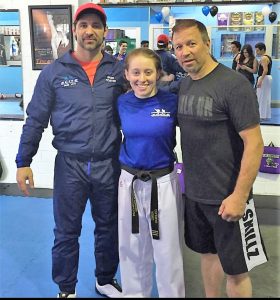
While I was at school and university I was instructing kids from 5 years up to adult classes. I did that for close to 10 years until I started full time work as a physiotherapist so haven’t had the time to continue with the teaching side sadly.
Beside things like bruises, black eyes and bleeding noses the most common injuries are probably ankle, knee and hip injuries. Over the years I have had multiple ankle sprains, damaged my medial collateral ligament in my knee (I was out of action for twelve weeks). I have had my fair share of black eyes and bleeding noses!
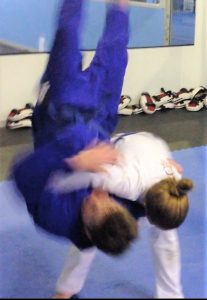
Because it has changed my life. Not only have I become physically fit and strong but I have become disciplined and grown in confidence. Friendships are lifelong, the sense of comradery is amazing. Although the training is very strenuous, I find it very rewarding and a fantastic outlet. It is my way of life.
Good nutrition is definitely a key factor. Competition entry is based on weight divisions, so there are times when you need to have a strict diet to ensure that you stay within your weight range. Staying well hydrated during strenuous training and hot weather is a must! Currently I train five days a week, up to two hours per session as well as three to four yoga classes per week.
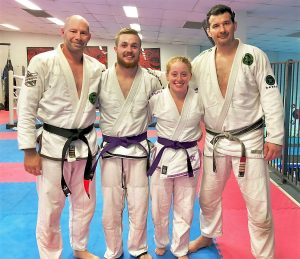
Although it is an individual sport, and you set your own goals, work at your own pace and you are in the ring on your own, there is big sense of comradery and family amongst the team. A great support network. You always partner train as well, so this also builds the team environment.
Taekwondo is a white uniform it is called a Dobok. This consists of pants and a shirt that slips over your head, then ties up with your belt – no shoes!
In Jiujitsu it is called a Gi. This consists of pants and a cross over jacket with a thick lapel so people can really grab you! This also ties up with a belt – no shoes!
Muay Thai – shorts and a singlet – no belt – no shoes!

This is used for Taekwondo and Muay Thai. For Taekwondo you wear a helmet/head
guard, mouthguard, chest guard, forearm and shin guard. For Muay Thai there is a head guard, mouthguard, boxing gloves and shin guards. These are used for training and amateur competitions. At training mouth guards are only used during sparring.
Renee also likes to read, cook, run, hike and go fishing when she gets some spare time. She is an avid yoga fan and a yoga instructor! Keep an eye out for her classes coming soon to Jordan Springs!